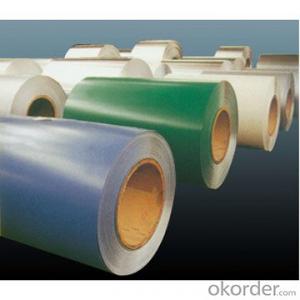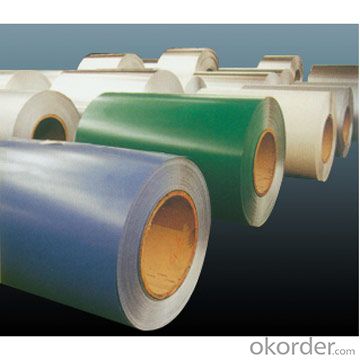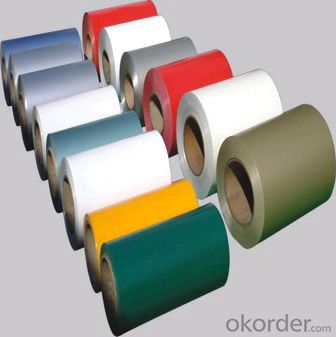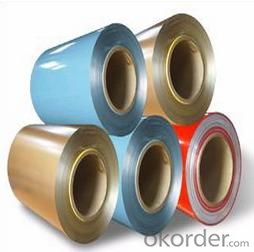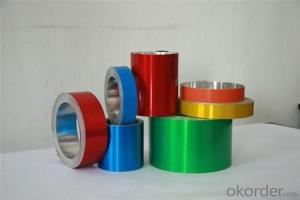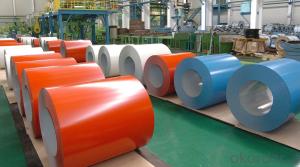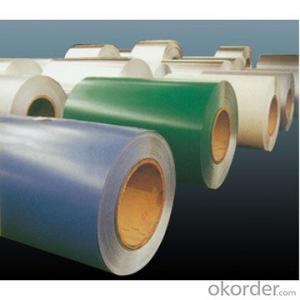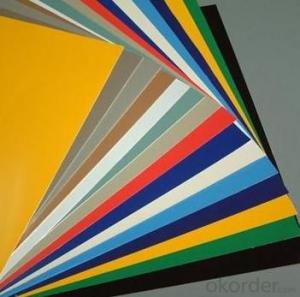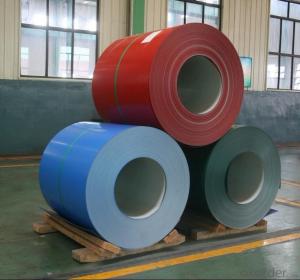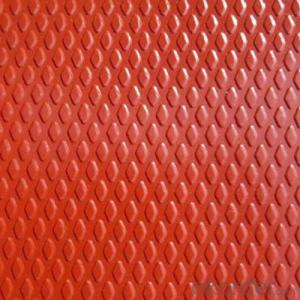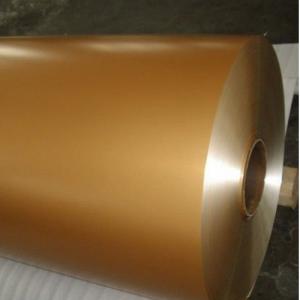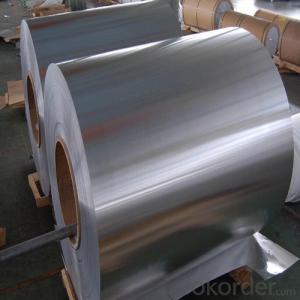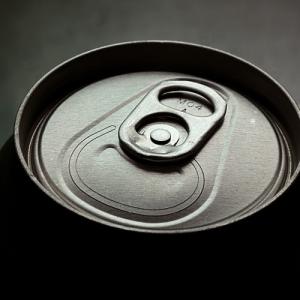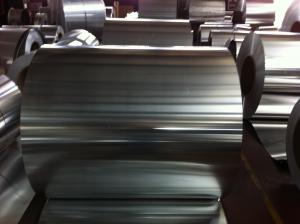5052 Aluminum Coil Price - Prepainted Alu Coil for Any Application
- Loading Port:
- China Main Port
- Payment Terms:
- TT OR LC
- Min Order Qty:
- -
- Supply Capability:
- -
OKorder Service Pledge
OKorder Financial Service
You Might Also Like
Aluminium alloys with a wide range of properties are used in engineering structures. Alloy systems are classified by a number system (ANSI) or by names indicating their main alloying constituents (DIN and ISO).
The strength and durability of aluminium alloys vary widely, not only as a result of the components of the specific alloy, but also as a result of heat treatments and manufacturing processes. A lack of knowledge of these aspects has from time to time led to improperly designed structures and gained aluminium a bad reputation.
One important structural limitation of aluminium alloys is their fatigue strength. Unlike steels, aluminium alloys have no well-defined fatigue limit, meaning that fatigue failure eventually occurs, under even very small cyclic loadings. This implies that engineers must assess these loads and design for a fixed life rather than an infinite life.
Another important property of aluminium alloys is their sensitivity to heat. Workshop procedures involving heating are complicated by the fact that aluminium, unlike steel, melts without first glowing red. Forming operations where a blow torch is used therefore require some expertise, since no visual signs reveal how close the material is to melting. Aluminium alloys, like all structural alloys, also are subject to internal stresses following heating operations such as welding and casting. The problem with aluminium alloys in this regard is their low melting point, which make them more susceptible to distortions from thermally induced stress relief. Controlled stress relief can be done during manufacturing by heat-treating the parts in an oven, followed by gradual cooling—in effect annealing the stresses.
The low melting point of aluminium alloys has not precluded their use in rocketry; even for use in constructing combustion chambers where gases can reach 3500 K. The Agena upper stage engine used a regeneratively cooled aluminium design for some parts of the nozzle, including the thermally critical throat region.
Another alloy of some value is aluminium bronze (Cu-Al alloy).
Aluminium foil acts as a total barrier to light and oxygen (which cause fats to oxidise or become rancid), odours and flavours, moistness, and germs, it is used broadly in food and pharmaceutical packaging. The purpose of aluminium is to make long-life packs (aseptic processing|aseptic packaging) for drinks and dairy goods, which allows storing without refrigeration. Aluminium foil containers and trays are used to bake pies and to pack takeaway meals, ready snacks and long life pet foods.
Aluminium foil is widely sold into the consumer market, often in rolls of 500 mm (20 in) width and several metres in length.It is used for wrapping food in order to preserve it, for example, when storing leftover food in a refrigerator (where it serves the additional purpose of preventing odour exchange), when taking sandwiches on a journey, or when selling some kinds of take-away or fast food. Tex-Mex restaurants in the United States, for example, typically provide take-away burritos wrapped in aluminium foil.
Aluminium foils thicker than 25 μm (1 mil) are impermeable to oxygen and water. Foils thinner than this become slightly permeable due to minute pinholes caused by the production process.
- Q: How to calculate the wall thickness with the gross weight of aluminum coil known?
- Gross weight*density=volume volume÷(aluminum sheet *width)=thickness
- Q: Can aluminum coils be used for thermal insulation purposes?
- No, aluminum coils cannot be used for thermal insulation purposes.
- Q: What is the hardness of aluminum coils?
- The hardness of aluminum coils can vary depending on factors such as the alloy used and the specific manufacturing process. However, in general, aluminum coils are known for their relatively low hardness compared to other metals.
- Q: Can aluminum coils be used for pharmaceutical packaging?
- Yes, aluminum coils can be used for pharmaceutical packaging. Aluminum is a popular choice for packaging in the pharmaceutical industry due to its excellent barrier properties, light weight, and resistance to corrosion. It provides a protective and hygienic environment for pharmaceutical products, ensuring their safety and extending their shelf life.
- Q: What are the common surface preparation methods for aluminum coils?
- To prepare aluminum coils for use, it is necessary to engage in common surface preparation methods such as cleaning, degreasing, and etching. In the surface preparation process, cleaning is typically the initial step. Its purpose is to eliminate any dirt, dust, or other impurities from the surface. Various techniques can be employed for cleaning, including the use of solvents, alkaline cleaners, or mechanical methods like brushing or scrubbing. Degreasing is another crucial aspect of aluminum coil preparation. Its objective is to eliminate any oils or greases that may be present on the surface. Degreasing can be accomplished by employing solvents or alkaline cleaners specifically designed for this purpose. Thorough removal of grease or oils is vital as they can interfere with subsequent treatments and coatings. Etching is commonly performed on aluminum coils to enhance adhesion for subsequent coatings or treatments. It involves creating a roughened surface. Etching can be carried out using chemical etchants or mechanical methods like sandblasting. The choice of etching technique depends on the specific application requirements and desired surface finish. Following surface preparation, additional treatments can be applied to aluminum coils, such as conversion coatings or anodizing, to enhance corrosion resistance or improve surface properties. These treatments safeguard the aluminum surface and provide a foundation for further finishes or coatings. In summary, proper surface preparation plays a critical role in achieving optimal adhesion, corrosion resistance, and overall performance of aluminum coils in diverse applications. It ensures that the surface is clean, free from contaminants, and appropriately prepared for subsequent treatments or coatings.
- Q: How are aluminum coils tested for surface roughness?
- Aluminum coils are tested for surface roughness through various methods, including visual inspection, mechanical profiling, and non-destructive testing techniques. Visual inspection involves examining the surface with the naked eye to identify any visible roughness or irregularities. Mechanical profiling employs instruments like profilometers to measure the surface roughness parameters, such as Ra (average roughness) or Rz (mean peak-to-valley height). Non-destructive testing methods, like ultrasonic or eddy current testing, can also be utilized to detect surface irregularities without causing any damage to the coil. These tests ensure that the aluminum coils meet the required surface roughness specifications for their intended applications.
- Q: How are aluminum coils installed in various applications?
- Aluminum coils are installed in various applications using different methods depending on the specific requirements and the nature of the application. Here are a few common methods used for installing aluminum coils: 1. HVAC Systems: In heating, ventilation, and air conditioning (HVAC) systems, aluminum coils are commonly used for heat transfer. These coils are typically installed inside the air handling units or the condensing units. The installation process involves securing the coils in the designated space, connecting them to the refrigerant lines, and ensuring proper insulation and sealing to prevent any leaks. 2. Refrigeration: In refrigeration systems, aluminum coils are used to transfer heat and facilitate the cooling process. The coils are usually installed within the evaporator or condenser units. The installation process involves mounting the coils securely, connecting them to the refrigerant lines, and making sure that all components are properly insulated and sealed. 3. Heat Exchangers: Aluminum coils are widely employed in heat exchangers for various industrial applications. These coils are installed within the heat exchanger unit, which can be either a shell and tube design or a plate and frame configuration. The installation process involves positioning the coils within the exchanger, connecting them to the appropriate piping and fittings, and ensuring proper alignment and sealing. 4. Automotive Radiators: Aluminum coils are extensively used in automotive radiators for efficient heat dissipation. The installation process involves mounting the coils within the radiator assembly, connecting them to the coolant lines, and ensuring proper alignment and sealing to prevent any leakage. 5. Electrical Transformers: In electrical transformers, aluminum coils are utilized for efficient power transmission and electrical insulation. The installation process involves winding the aluminum coils around the transformer core, connecting them to the appropriate terminals, and ensuring proper insulation and grounding. In all these applications, it is crucial to follow industry standards and guidelines to ensure the proper installation of aluminum coils. This includes considering factors such as structural support, proper alignment, connection integrity, insulation, and sealing to achieve optimal performance and longevity.
- Q: What is the cost involved in the production of an aluminum coil?
- <p>The cost to produce an aluminum coil varies significantly based on several factors. These include the cost of raw materials, energy costs for melting and rolling, labor, and overhead expenses. Additionally, the price of aluminum on the commodities market directly impacts the cost. As of recent market trends, the cost can range from a few hundred to several thousand dollars per ton, depending on the specific alloy and thickness of the coil. It's essential to consider the current market prices for aluminum and the efficiency of the production process when calculating the cost to produce an aluminum coil.</p>
- Q: Is it safe to use aluminum coils in various applications?
- <p>Yes, aluminum coils are generally safe to use. They are widely used in various industries due to their excellent thermal conductivity, corrosion resistance, and lightweight properties. Aluminum coils are non-toxic and do not emit harmful substances, making them safe for applications such as food packaging and construction. However, safety can depend on specific uses and manufacturing processes, so it's important to ensure that the coils meet the required safety standards for their intended application.</p>
- Q: How are aluminum coils processed for specific surface coatings?
- Aluminum coils are processed for specific surface coatings through a series of steps. First, the coils go through cleaning and pre-treatment processes to remove any impurities and ensure proper adhesion of the coating. This step involves degreasing, etching, and rinsing. After pre-treatment, the coils are coated with the desired surface finish using techniques like coil coating or coil painting. This involves applying a layer of paint or coating material onto the surface of the coils using rollers or sprayers. Finally, the coated coils are cured or dried through heat treatment to ensure proper bonding and durability of the surface coating.
Send your message to us
5052 Aluminum Coil Price - Prepainted Alu Coil for Any Application
- Loading Port:
- China Main Port
- Payment Terms:
- TT OR LC
- Min Order Qty:
- -
- Supply Capability:
- -
OKorder Service Pledge
OKorder Financial Service
Similar products
Hot products
Hot Searches
Related keywords
